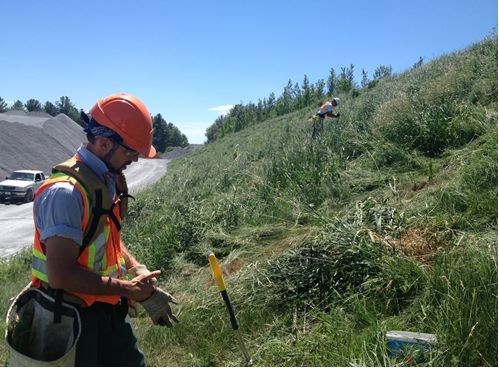It's used to help environmental problems like acid rain and to treat water and sewage. It's critical in processing at mines and in the pulp industry. It's used in animal feed, for vegetable and fruit storage, in building and road construction and in processing sugar. It's even used in making tortillas and corn chips. What is it?
It's lime and limestone products.
Lime is one of the oldest and most vital materials in use on our planet. Limestone is the most abundant sedimentary rock in the world. Burning limestone in a kiln creates lime. The Graymont facility proposed to be built near Giscome will include both a limestone quarry and a lime processing plant and will produce high-quality lime for at least 50 years, according to Project Manager David Chamberlain.
"The lime products from Giscome will be used primarily in pulp mills and for mines in western Canada and the North," he said. "In the pulp and paper industry, our products are essential in the process or as fillers in papermaking. In mining, limestone and lime products are used to extract many other minerals our world relies upon, such as gold and copper. These industries represent the largest user of our products."
In recent years, limestone products have become essential in treating a wide range of complex environmental issues. "In industrial and power plants, our products scrub and clean exhaust gas to reduce pollutants such as sulphurs that may be released into the air," Chamberlain said. "Environmental rehabilitation, oil and gas production as well as power generation are among the long and growing list of crucial sustainability-related applications for our products."
In agriculture, Graymont products are used with crops to neutralize soil acidity, to increase plant nutrients and organic matter, to enhance soil organisms and increase trace elements, Chamberlain explained. "Interestingly, lime kiln dust, which is a by-product of the lime manufacturing process, is now in great demand for soil remediation and in uses to support agriculture," he said.
Limestone is also necessary for specialized repairs to historic buildings such as the Parliament Buildings in Ottawa and Boston's fabled Faneuil Hall.
Graymont is a privately owned company, headquartered in Richmond, B.C. with facilities in Canada, the United States and New Zealand. 'The company's roots go back over seven decades and we've been in some communities for almost a century, providing long-term employment and support to sometimes an entire town or village," Chamberlain pointed out.



